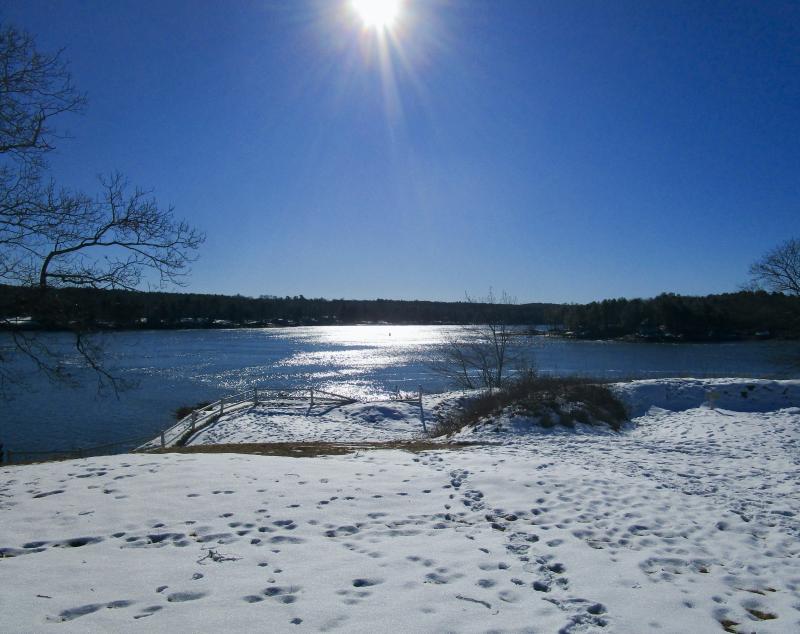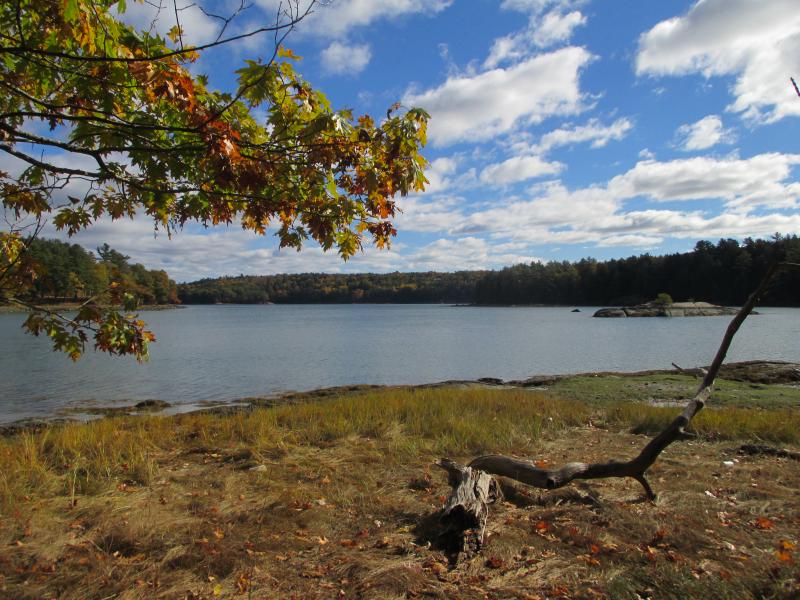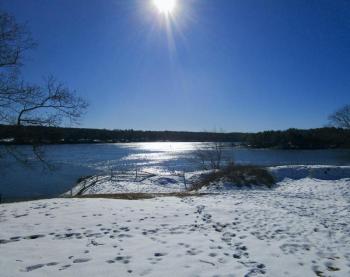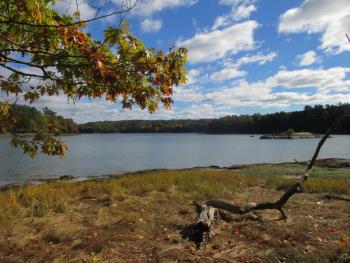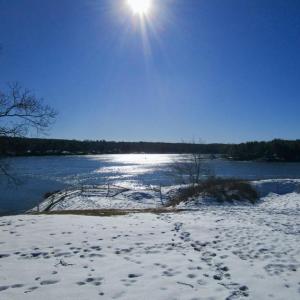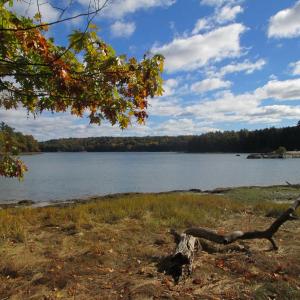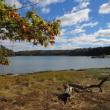Edgecomb, more than meets the eye
Let’s turn our attention to the town of Edgecomb where our neighbors across the Sheepscot River are celebrating their town’s 250th birthday. Mark your calendar: A town-wide birthday party is planned for Sunday afternoon, March 17 (updated from original posting) at Edgecomb Town Hall. Wow, that’s going to be a lot of candles to get on a cake. I first laid eyes on Edgecomb when I arrived from Fort Collins, Colorado in the early part of January 1979. I shared a home with relatives who were living in North Edgecomb off Boothbay Road. That month was one of the coldest I can remember. The pipes in the house froze three or four times, and I remember a few mornings there being frost on the inside of the kitchen windows. The worst was when my pickup froze up and wouldn’t start. This was just a few weeks before I started working as a reporter for the Boothbay Register-Wiscasset Newspaper.
After we were married, Marjorie and I lived on Davis Island renting the back half of the 1838 Echo House across from Fort Edgecomb, the town’s most famous landmark. The timber octagonal block house erected in 1808 and 1809 is now a state park popular with picnickers and history buffs. The fort’s stone and earthen ramparts overlook the deep, swift-moving channel called “Decker’s Narrows” which separates Davis Island from Westport Island.
One of the old stories told about Fort Edgecomb was that there was a secret tunnel beneath it leading to the river to be used as an escape route should the fort ever be surrounded by an enemy. Rufus King Sewall, a 19th century Wiscasset attorney and historian, wrote about it saying as a boy he and his friends enjoyed playing in the underground passageway leading from the crawl space of the blockhouse to the shore. Over the years there’ve been a number of historical digs on the fort’s grounds and to my knowledge no evidence of a hidden tunnel has ever been found.
Next time you visit Fort Edgecomb, look for the granite “Boardway Bench” on its grounds that was donated by the Boardway family. In the 1960s Alice and Walker Boardway operated a small takeout stand here selling sandwiches and lobster dinners. For many years the Boardways owned and lived in the Echo House where on a calm day you can stand on the front porch, call out and hear your echo coming back from across the river.
There are a number of fairly high hills in Edgecomb; one of the highest points is Mount Hunger, a part of the 766-acre Schmid Preserve home to hiking, mountain biking and cross-country skiing trails. Although not much more than a high hill, Mount Hunger is off Old County Road. It rises roughly to an elevation of 280 feet, but the climb to its summit is a gradual one and barely noticeable. Don’t expect to see a great view from the top because the trees have long since grown up all around it. In this same general area can be found several of Edgecomb’s open pit mines where feldspar and mica were mined in the 1880s. Several pits dug by pick and shovel can be found in Schmid Preserve. White feldspar was the more valuable of the ores sought as it was used as an ingredient to make fine china. Later it was mica that was dug for use in early radio tubes.
Close to Boothbay in East Edgecomb is Mount Edgecombe, the town’s highest peak at about 320 feet according to my U.S. topographical map. Mount Edgecombe is also known as “Bill John Williams Hill,” named for an early settler and homesteader. In the early 1900s when this hill was clear of timber you could see Boothbay Harbor and the ocean from the summit. Another of the town’s natural features is Lilly Pond, a freshwater lake of about 65 acres located south of the town hall. In early days this body of water fed by Parson’s Creek was much larger and known as Crystal Pond. In the 1800s, a grist mill was located here where a water-powered millstone was used to grind grain into flour.
Off River Road in East Edgecomb can be found Salt Marsh Cove, a part of the Damariscotta River bordered on its south side by Bennett Neck. It can be reached by following the trail at Colby Preserve which starts alongside the old brick schoolhouse. Ages ago there was a saltworks here where sea salt was extracted from the brackish water and also a grist mill. Lumber was milled, too, cut by an old-fashioned up-and-down saw and shipped by barge from nearby Poole’s Landing. When those industries faded away, a brickworks opened. There was an ice works too operated by Foster and Dodge; block ice being used to keep food from spoiling before the days of refrigeration. Over time traces of these early enterprises have completely vanished. All that remains along the shore are bits of glass and chunks of blackened bricks.
A 19th century map of Edgecomb shows the town separated into five areas: the Eddy, at Davis Island; the Mount Hunger region, Parson’s Point along Parson’s Creek; the Cross Point/Madockawando section and East Edgecomb where Merry Island and Poole’s Landing are. Many interesting facts about early Edgecomb can be found in an interesting two-volume history of town compiled by the late Katherine Chase Owen and published in 1986. Mrs. Owen was the sister of John Chase, also deceased, onetime postmaster of the Edgecomb Post Office and former columnist for the Boothbay Register-Wiscasset Newspaper. I remember having many interesting conversations with both John and Katherine. Something John had written in November 1979 caught my eye recently when I was looking over the Boothbay Register newspaper archives. It concerned Cross Point Road, known in the old days as Modockawando Road. A short ways down from Edgecomb Community Church are two stone pillars on either side of a driveway leading to the Sheepscot River. John wrote that these pillars, which have since been repaired and rebuilt, were originally erected in the 1920s. They were placed here to mark the entrance of a planned summer retreat similar to the Sprucewold development in Boothbay Harbor.
Sprucewold began at around the same time period as a summer community consisting of rustic log cabins. According to what John wrote, the planned Edgecomb development was to be called Modockawando. It was the dream of F. Burton Haggett of Wiscasset, the original owner of the Wiscasset Ford dealership and Haggett Garage on Water Street that has since been torn down. After a few years Haggett abandoned his Modockawando project and eventually sold off the property.
This same area was first settled by an early English settler named Samuel Trask. According to history that’s been passed down Trask was a seafaring man who arrived around 1744 with the intent of giving farming a try. He bartered with the Natives for a sizable piece of land at a place that came to be known as The Heights. This fairly high point also on Cross Point Road overlooks the Sheepscot River offering a pleasant view of Wiscasset. Samuel Trask and the other early settlers were living quite contentedly until three men arrived from Boston to challenge their land claims. The story had a happy ending for Trask and his friends, thanks to an attorney who successfully defended their claims in court. Out of gratitude the settlers named their small but growing community Freetown. The name stuck until 1774 when the general Court of Massachusetts renamed the town Edgecumbe (its original spelling) meant to honor Lord Edgecumbe, a loyal friend to the American Colonies.
Phil Di Vece earned a B.A. in journalism studies from Colorado State University and an M.A. in journalism at the University of South Florida. He is the author of three Wiscasset books and is a frequent news contributor to the Boothbay Register-Wiscasset Newspaper. He resides in Wiscasset. Contact him at pdivece@roadrunner.com

